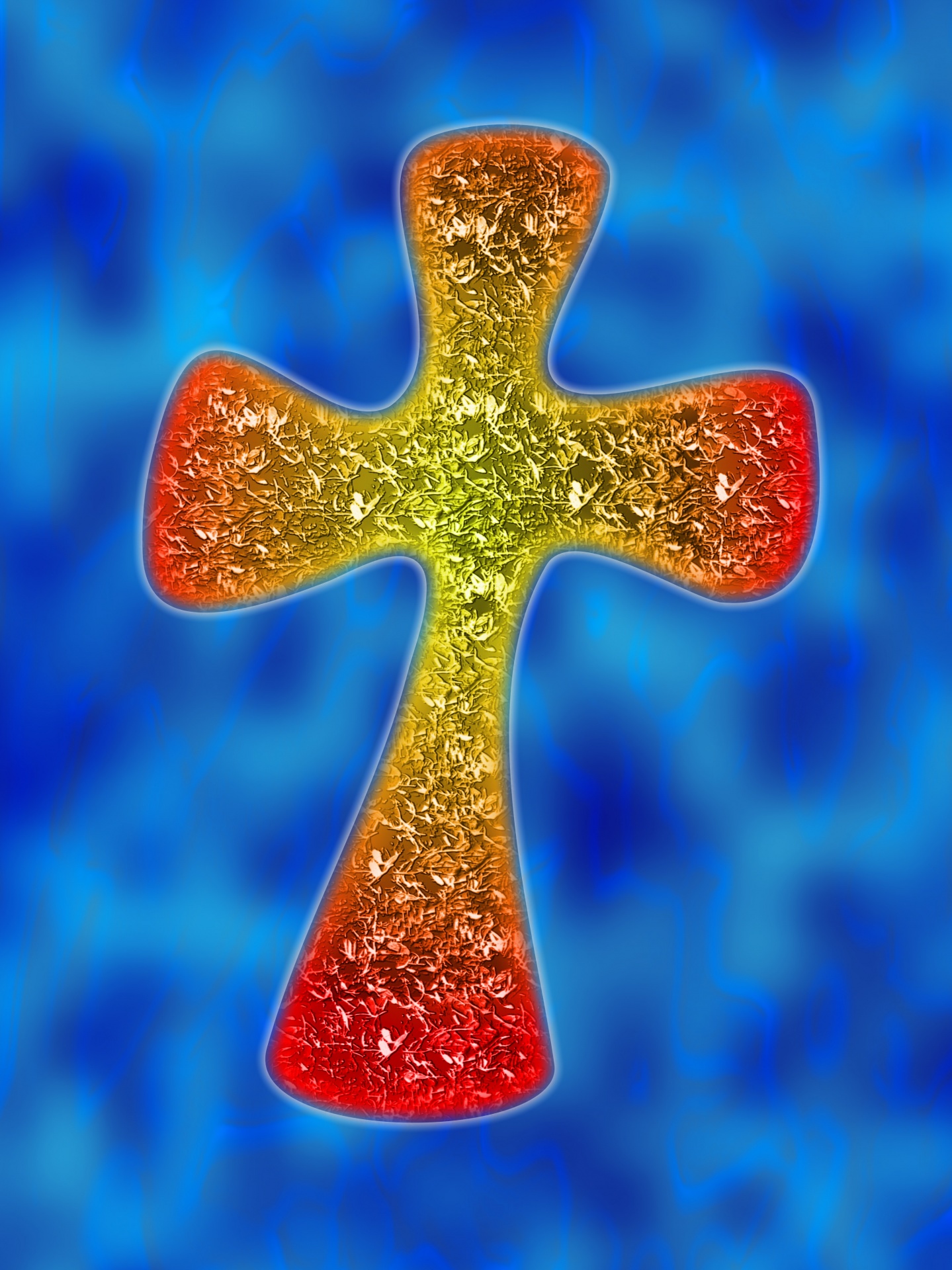A Journey of Discovery: The Meaning of the Cross in Christianity
Welcome, dear reader, to a conversation about one of the most recognizable symbols in Christianity: the cross. This symbol has been a significant part of the religion’s history and teachings, and its meaning has evolved over the years.

In this article, we will delve into the history of the cross as a symbol in Christianity, explore the different types of crosses and their meanings, examine the cross’s significance as a symbol of faith and hope, appreciate the cross’s artistic representation in art and architecture, and reflect on the cross’s personal meaning in daily life.
If you are looking to understand more about this important symbol in the Christian faith, then this article is for you. So, grab your coffee, sit back, and join us in this journey of discovery.
The history of the cross symbol in Christianity.

The cross is the most recognizable symbol of Christianity, and its significance cannot be overstated. For centuries, believers have looked to the cross as a source of strength and inspiration.
But where did this powerful symbol come from? The history of the cross in Christianity can be traced back to the earliest days of the church.
In ancient times, crucifixion was a common form of execution. The Romans used it as a punishment for criminals and rebels, leaving their bodies on public display as a warning to others.
But for Christians, the cross took on new meaning after Jesus’ death and resurrection. They saw it not just as an instrument of torture but also as a sign of hope and redemption.
Early Christian writers like Tertullian wrote about how Christ’s sacrifice on the cross had saved humanity from sin and death. And over time, artists began depicting Jesus hanging on or holding onto crosses in artwork throughout Christian history.
Today crosses come in many forms: plain wooden ones or ornately decorated metal ones; small lapel pins or massive architectural features atop churches; simple symbols etched into jewelry or elaborately carved into gravestones – each one representing something different yet all reminding us that we are never alone thanks to God’s love shown through Christ’s sacrifice.
As you explore Christianity further after reading our article section here today about History Of Cross Symbol In Christianity consider reaching out to your local church community if interested!
Different types of crosses and their meanings.
The cross is a symbol that holds great significance in Christianity, and its various types hold different meanings. As a youth pastor at a Christian church, it’s crucial to educate our young congregation about the different types of crosses and what they represent.
One of the most recognizable crosses is the Latin cross or crucifixion cross. This type of cross features two intersecting lines with one vertical line longer than the other. The Latin Cross represents Jesus’ crucifixion on Calvary Hill.
Another common type is the Greek Cross, which has four equal arms that meet at right angles in the center. It was used as an early symbol for Christianity and represents balance and harmony.

The Celtic Cross features intricate designs such as knots or spirals within its structure; it represents Irish heritage but also signifies Christ’s sacrifice on Calvary Hill through its extension beyond traditional boundaries.
The Jerusalem Cross consists of five crosses arranged so that one large central cross sits between four smaller ones placed diagonally around it; this design reflects Christ’s message spreading across all directions from Jerusalem after his resurrection.
Finally, there’s St Andrew’s Cross – X-shaped with diagonal beams crossing each other – representing Saint Andrew who was martyred by being tied to an X-shaped crucifix instead of traditional T-shape due to his request not wanting to be associated directly with Jesus’ death.
By understanding these different types of crosses’ meanings, we can gain a deeper appreciation for their significance in our faith journey. As Christians continue their walk-in faith exploration- may these symbols provide comfort during times when words fail us!
The cross is a symbol of faith and hope.
The cross is a powerful symbol of faith and hope in Christianity. It represents the sacrifice that Jesus made for humanity and the ultimate victory over death.
As Christians, we wear or display the cross as a reminder of our faith and commitment to follow Jesus Christ. It serves as a symbol of hope, reminding us that no matter what trials or struggles we face in life, there is always light at the end of tunnel.
One interesting fact about the cross is that it was not always used as a Christian symbol. In fact, it was originally associated with Roman execution methods and seen as a sign of shame. However, when Jesus died on the cross for our sins, he transformed this once negative image into something positive – something full of love and redemption.
Today, crosses come in all shapes and sizes – from simple wooden ones to elaborate gold-plated designs. But no matter how they look on the outside, they all share one common meaning: faith in God’s love for us.
So whether you wear your cross around your neck or display it proudly on your wall at home – know that its significance goes far beyond just an accessory or decoration piece. The power behind this symbol lies within each individual’s heart who has chosen to embrace its message – one filled with forgiveness , compassion ,and eternal hope .
The use of the cross in art and architecture.
The cross has been a symbol of Christianity for over 2,000 years, and its presence in art and architecture is a testament to its enduring significance. From the stained glass windows of cathedrals to the intricate carvings on wooden altarpieces, the cross can be found in countless forms throughout Christian history.

In addition to being a powerful religious symbol, the cross also serves as an emblem of sacrifice and redemption. It reminds us that through Jesus’ death on the cross, we are offered forgiveness for our sins and eternal life with God.
As you explore art and architecture featuring crosses from different time periods around the world, you may notice variations in their design. For example, some crosses have three bars rather than two – this is known as a “triple bar” or “Russian” cross. Others may feature intricate patterns or symbols within their shape.
No matter what form it takes though, one thing remains constant: The message behind it all – that Christ died so that we could live forever with Him – remains ever present.
So next time when you encounter a beautiful piece of art or architectural wonder featuring this iconic symbol remember what it stands for- hope!
Personal reflections on the meaning of the Cross in daily life.
The cross symbolizes so much more than just a piece of jewelry or decoration. As a Christian, I have found that the meaning of the cross permeates every aspect of my daily life.
At its core, the cross represents love and sacrifice. It is a reminder that Jesus Christ willingly gave his life for us, so that we might be saved from our sins. This act of selflessness teaches us about true love – putting others before ourselves.

In addition to its spiritual significance, the cross can also serve as a source of strength and comfort in difficult times. When facing trials or challenges in life, it reminds us to turn our focus back to God and trust in His plan for our lives.
Moreover, carrying one’s own “cross” means accepting hardships with grace and perseverance – something we all face at some point during this journey called ‘life.’
Ultimately, incorporating the meaning of the cross into daily life involves living out these principles through actions rather than words alone: showing compassion towards others; being humble; forgiving those who wronged you; doing good deeds without expecting anything back – all while keeping your faith strong even when it’s tough.
May we always keep this powerful symbol close to our hearts each day as an inspiration on how best we can continue on with courage towards fulfilling what God has planned for us!
Conclusion
From its earliest days in Christianity, the cross has been a powerful symbol of faith and hope. It carries deep meaning for many people from all different backgrounds and can impact us each day through art, architecture, or personal reflections. If you want to learn more about this meaningful symbol – both historically and today – be sure to reach out to your local church youth pastor!
















